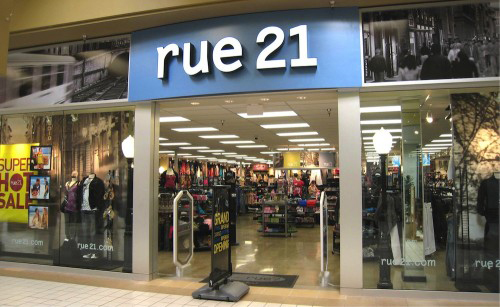
Retail’s been getting hammered lately with the blame-game stemming from weird weather patterns and therefore less demand on in-stock apparel items, to buyouts happening as fast as young people switching favorite social networks.
First, Rue 21, the teen retailer with an estimated 900 stores, has entered into an agreement to get purchase by Apax Partners, a private equity firm for $1.1 billion. When the deal was announced, the purchase price was $42 a share, which was a 23% premium at closing.
“That price is pretty fair,” said Amy Hu Sunderland, a Hong Kong-based analyst at Grandeur Peak Global Advisors LLC, which oversees $950 million and owns shares of Rue21. “They can get a lot of cash flow out of it. These guys are not levered at all, they should be able to get much higher return because they can lever it.”
Apparently, Apax investors have $6.3 billion of equity in retail including Tommy Hilfiger and Calvin Klein.
After Hot Topic was purchased last March for $600,000 the next chain in line according to investors appeared to be Rue21, which competes with Hot Topic as well as stores such as Target in terms of youth culture apparel and accessories.
Zumiez and Blue Tomato
Meanwhile, Zumiez, Inc. had a 1st quarter slide in earnings of 44.4% to $2.5 million compared with $4.5 million year mainly due to the purchase of Blue Tomato.
According to Richard M. Brooks, the CEO of Zumiez, “In Europe, we believe there’s tremendous opportunity to gain market share by leveraging the combined strengths of Zumiez and Blue Tomato. Our European business has performed well in light of the economic headwinds. And while challenges remain, we are confident there is a great deal of potential to build upon our position as the region recovers. As the second-largest action sports market in the world, the opportunity in Europe is integral to our long-term plans.”
According to Zumiez, the decrease in cash and current marketable securities is a result of the acquisition of Blue Tomato, which was funded by the Company’s cash and current marketable securities balance, as well as capital expenditures and stock repurchases, offset by cash generated through operations.
Brooks stated, “Our business improved throughout the first quarter driven by strong full price selling during the combined March/April period. These results, which were delivered in a more challenging operating environment than a year ago, reflect the success of our continued execution on long-term growth strategies and the strength of our highly differentiated and diverse merchandise offering. We remain confident that our current course can continue to yield increased top and bottom line long-term gains.”

Abercrombie & Fitch Gets Hammered
Press and social media, even the “Ellen” show have gotten on the bandwagon hammering Abercrombie & Fitch with the reoccurance of old video clips and stories of their CEO Mike Jeffries stating Abercrombie was not interested in people who they didn’t deem worthy of their collections.
Abercrombie slid 9% to $838.8.million with direct-to-consumer online sales dropping a whopping 15% in Q1 statements. Apparently inventory shortages may have accounted for the Q1 poor results, but the real fall-out and brand backlash is coming from the re-surfaced footage of Jeffries explaining his target market (from 2006) that his brand was exclusionary in that they don’t cater to larger sizes (over a sized 10).
There’s such a backlash going on that DIY T-shirts are popping-up with anti –Abercrombie statements on them being worn the most outspoken young people against the brand. This story is not yet over at all, as more teens are purposely getting rid of any Abercrombie items they have and openly declaring that they will no longer be supporting the brand.
In the age of fast-technology and the speed of viral marketing, Abercrombie is quickly becoming a case study for the negative effects of social media.
Meanwhile, Aeropostale was down in Q1 by 9% to $452.3 million, and Gap down 2%. Aeropostale announced “uncertainty regarding the overall macroeconomic environment.” Discretionary spending among youth culture has shifted and not necessarily in the direction of many of these large retailers (see also our Spring Youth Culture Study 2013). Basically, the recession is clearly an on-going issue and there’s an entirely new teen market that has grown up with a different sense of what’s important when it comes to their spending habits on clothing and accessories.
Urban Outfitters, which is usually one of the stronger players in the teen retailer segment, is down 1.6% and American Eagle slipped .8%. Neither one are too far off, but they are indications of the changing retail environment for teen retailers.


